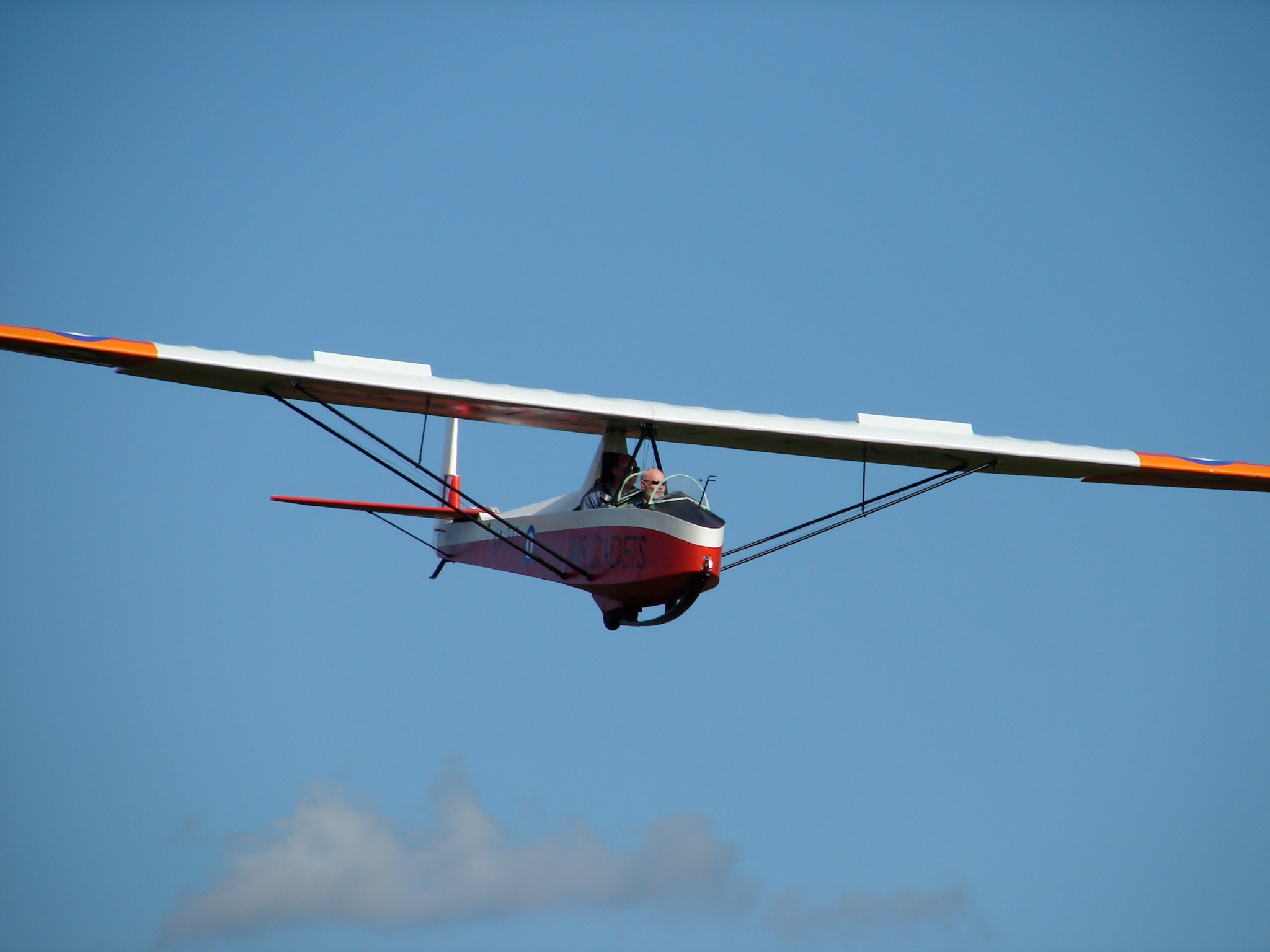Slingsby Tandem Tutor on:
[Wikipedia]
[Google]
[Amazon]
The T.31 Tandem Tutor is a British military training
 ;
*
;
*
RAF Museum
{{Slingsby aircraft 1940s British sailplanes Glider aircraft Tandem Tutor Parasol-wing aircraft Aircraft first flown in 1949
glider
Glider may refer to:
Aircraft and transport Aircraft
* Glider (aircraft), heavier-than-air aircraft primarily intended for unpowered flight
** Glider (sailplane), a rigid-winged glider aircraft with an undercarriage, used in the sport of gliding
...
, designed and built by Slingsby Slingsby may refer to:
* Slingsby (surname)
* Slingsby, North Yorkshire
* Slingsby Aviation
Slingsby Aviation was a British aircraft manufacturer based in Kirkbymoorside, North Yorkshire, England. The company was founded to design and buil ...
and used in large numbers by the Air Training Corps
The Air Training Corps (ATC) is a British volunteer-military youth organisation. They are sponsored by the Ministry of Defence and the Royal Air Force. The majority of staff are volunteers, and some are paid for full-time work – including ...
between 1951 and 1986.
Design and development
The T.31 was a tandem two-seat development of the T.8 Tutor (RAF Cadet TX.2). The fuselage was based on that of theT.29 Motor Tutor
T is the twentieth letter of the Latin alphabet. (For the same letterform in the Cyrillic and Greek alphabets, see Te and Tau respectively).
T may also refer to:
Codes and units
* T, Tera- as in one trillion
* T, the symbol for "True" in ...
, increased in length and widened slightly; the wings and tail were unchanged. A single T.31A prototype was flown in 1949, followed by the production T.31B, with spoilers and a small additional wing bracing strut.
Operational history
Chief customer for the T.31B was theRoyal Air Force
The Royal Air Force (RAF) is the United Kingdom's air and space force. It was formed towards the end of the First World War on 1 April 1918, becoming the first independent air force in the world, by regrouping the Royal Flying Corps (RFC) an ...
for Air Cadet training; its aircraft were designated as Cadet TX Mark 3. As it was so similar to their existing single-seaters, it allowed easy conversion to solo. The RAF took delivery of 126 TX.3s between 1951 and 1959.
It also found a market with civilian clubs in the UK, although most of these were built from kits and spares, using existing Tutor wings. T.31s were exported to Burma, Ceylon, Israel, Jordan, Lebanon, Pakistan and Rhodesia. In addition, small numbers were built in Argentina, Israel and New Zealand. The T.35 Austral was a one-off development with span increased to 15.64 m (51 ft 3¾ in), sold to the Waikerie Gliding Club in Australia in 1952
After the RAF Cadet TX.3s were replaced by GRP gliders in the mid-1980s, the fleet was sold off, but never gained the same popularity with civilian owners as the side-by-side T.21, being a cheaper glider designed for "circuits and bumps", and only marginally soarable. Some were instead converted to simple ultra-light aircraft as Motor Cadets, with the front cockpit replaced by a Volkswagen or similar engine, and a three-point undercarriage.
Aircraft on display
*US Southwest Soaring Museum
The US Southwest Soaring Museum is an aviation museum, located at 918 E US Route 66, in Moriarty, New Mexico, United States that focuses on the history of gliding in the western United States. The museum is an affiliate member of the Soaring Socie ...
Royal Air Force Museum, Hendon.
RAF Manston History Museum has Slingsby Cadet TX.3 VM791 on display marked up as XA312
Operators
 ;
*
;
*Royal Air Force
The Royal Air Force (RAF) is the United Kingdom's air and space force. It was formed towards the end of the First World War on 1 April 1918, becoming the first independent air force in the world, by regrouping the Royal Flying Corps (RFC) an ...
**Air Training Corps
The Air Training Corps (ATC) is a British volunteer-military youth organisation. They are sponsored by the Ministry of Defence and the Royal Air Force. The majority of staff are volunteers, and some are paid for full-time work – including ...
Specifications (Slingsby T.31 Tandem Tutor)
See also
References
Citations
Cited sources
* Ellison, N.H. ''British Gliders and Sailplanes 1922–1970''. A & C Black, 1971 * Coates, Andrew. "Jane's World Sailplanes & Motor Gliders new edition". London, Jane's. 1980.Other sources
* Simons, M. ''Slingsby Sailplanes''. Airlife Publishing, 1996. * Taylor, J. H. (ed) (1989) ''Jane's Encyclopedia of Aviation''. Studio Editions: London. p. 29RAF Museum
External links
{{Slingsby aircraft 1940s British sailplanes Glider aircraft Tandem Tutor Parasol-wing aircraft Aircraft first flown in 1949